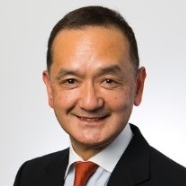Bone Regeneration in Dentistry, Oral and Maxillofacial Surgery: Part II
A special issue of Journal of Clinical Medicine (ISSN 2077-0383). This special issue belongs to the section "Dentistry, Oral Surgery and Oral Medicine".
Deadline for manuscript submissions: closed (30 June 2024) | Viewed by 3387
Special Issue Editor
Interests: regenerative dentistry; bone tissue engineering; stem cell therapy; gene-activated matrix; implant dentistry; orthognathic surgery
Special Issues, Collections and Topics in MDPI journals
Special Issue Information
Dear Colleagues,
An understanding of a wide range of bone regeneration, from periodontal defects to jawbone deficiency, is required in the daily practice of dentistry and oral and maxillofacial surgery. In particular, demands for bone regeneration are increasing due to the advancement of aging in our society. Autogenous bone grafts are still widely used as the gold standard because of their superior osteogenecity, though it has disadvantages such as limited availability and donor-site morbidity. However, recent advancements in material sciences and stem cell biology enable us to develop new strategies to regenerate bone deficiencies in the oral and maxillofacial regions. Thus, many clinical studies using new biomaterials, biological molecules, and/or stem cells have been conducted.
This Special Issue is intended to provide an overview of the recent advances in bone regeneration in dentistry and oral and maxillofacial surgery, and to give readers an idea of the strategies to standardize bone regeneration in the next era. The first part of this Special Issue has been successfully published. Now, we plan to publish a second part in response to the interests both from readers and authors.
On behalf of the Journal of Clinical Medicine, you are cordially invited to contribute an article to the Special Issue, “Bone Regeneration in Dentistry and Oral and Maxillofacial Surgery: Part II.” Research articles and reviews are welcome.
Prof. Dr. Izumi Asahina
Guest Editor
Manuscript Submission Information
Manuscripts should be submitted online at www.mdpi.com by registering and logging in to this website. Once you are registered, click here to go to the submission form. Manuscripts can be submitted until the deadline. All submissions that pass pre-check are peer-reviewed. Accepted papers will be published continuously in the journal (as soon as accepted) and will be listed together on the special issue website. Research articles, review articles as well as short communications are invited. For planned papers, a title and short abstract (about 100 words) can be sent to the Editorial Office for announcement on this website.
Submitted manuscripts should not have been published previously, nor be under consideration for publication elsewhere (except conference proceedings papers). All manuscripts are thoroughly refereed through a single-blind peer-review process. A guide for authors and other relevant information for submission of manuscripts is available on the Instructions for Authors page. Journal of Clinical Medicine is an international peer-reviewed open access semimonthly journal published by MDPI.
Please visit the Instructions for Authors page before submitting a manuscript. The Article Processing Charge (APC) for publication in this open access journal is 2600 CHF (Swiss Francs). Submitted papers should be well formatted and use good English. Authors may use MDPI's English editing service prior to publication or during author revisions.
Keywords
- alveolar bone regeneration
- jawbone reconstruction
- clinical trial
- biomaterials
- tissue engineering
- stem cells
Benefits of Publishing in a Special Issue
- Ease of navigation: Grouping papers by topic helps scholars navigate broad scope journals more efficiently.
- Greater discoverability: Special Issues support the reach and impact of scientific research. Articles in Special Issues are more discoverable and cited more frequently.
- Expansion of research network: Special Issues facilitate connections among authors, fostering scientific collaborations.
- External promotion: Articles in Special Issues are often promoted through the journal's social media, increasing their visibility.
- e-Book format: Special Issues with more than 10 articles can be published as dedicated e-books, ensuring wide and rapid dissemination.
Further information on MDPI's Special Issue polices can be found here.






